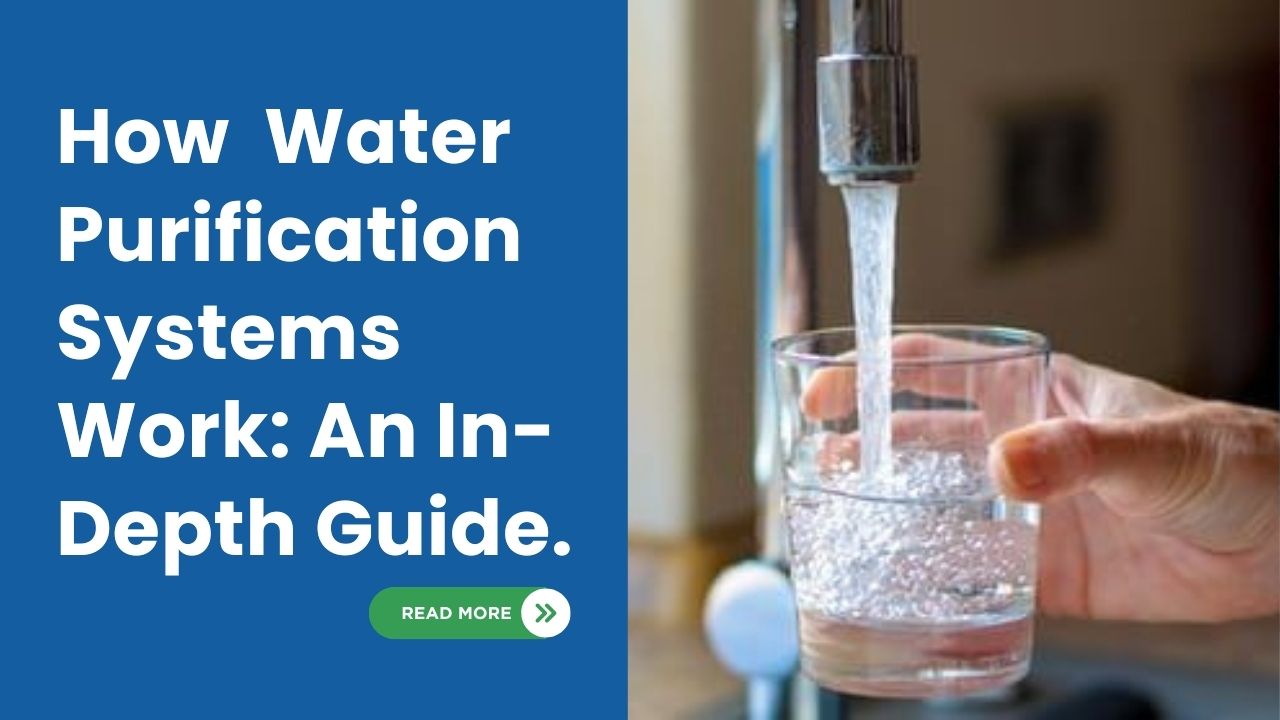Water purification systems play an essential role in ensuring access to clean and safe water for various purposes, from drinking and cooking to industrial processes. These systems remove contaminants and impurities from water, making it safe and suitable for human use. The filtration process varies depending on the type of system, but the fundamental concept remains the same: separating unwanted materials from water through physical or chemical means.
This article delves into how water filtration systems work, the common types of filtration, and their benefits in ensuring clean water.
1. Basic Principle of Water Filtration Systems
The main function of a water purification system is to remove impurities, including physical debris, chemicals, and biological contaminants like bacteria and viruses, from the water. This is achieved through a combination of physical barriers, chemical reactions, and biological processes.
At the core, purification systems usually involve several steps or stages. Water first passes through a pre-filter to remove large debris like sand, sediment, or leaves. It then passes through finer filters, which trap smaller particles. In some systems, chemical treatments are used to neutralize harmful substances, while others may employ ultraviolet (UV) light or other methods to kill bacteria and pathogens.
2. Key Components of Water Filtration Systems
Most water filtration systems consist of several key components:
- Sediment Filters: These are typically the first line of defense, used to remove larger particles like dirt, sand, and rust. Sediment filters act as mechanical sieves, preventing these particles from clogging the finer filters downstream.
- Activated Carbon Filters: One of the most common types of filtration is carbon-based. Activated carbon filters are used to absorb organic compounds, chlorine, and other chemicals that cause unpleasant odors and tastes. The porous structure of activated carbon allows it to trap contaminants while letting water pass through.
- Reverse Osmosis (RO) Membranes: In reverse osmosis systems, water is forced through a semi-permeable membrane that blocks a wide range of contaminants, including heavy metals, salts, and nitrates. RO is considered one of the most effective filtration methods, though it can be slower and more wasteful compared to others.
- Ultraviolet (UV) Purification: Some filtration systems incorporate UV light, which is used to disinfect water by killing bacteria, viruses, and other pathogens. UV purification does not remove chemicals or particles but ensures that harmful microorganisms are destroyed.
- Ion Exchange Resins: Ion exchange is often used to soften water by replacing hard minerals like calcium and magnesium with sodium or potassium ions. This process helps to prevent scale buildup in pipes and appliances, enhancing the quality of the water.
- Post-Filtration: Some systems also include a post-filtering step to ensure any residual particles or contaminants are removed before the water reaches the tap.
3. Types of Water Filtration Systems
Different types of water purification systems are designed to cater to specific needs and levels of contamination. Below are some of the most common types:
- Point of Entry (POE) Systems: These are installed at the main water line, ensuring that all water entering the home is filtered. POE systems are usually used to treat hard water, remove sediments, or address other large-scale water issues.
- Point of Use (POU) Systems: These systems are installed at specific water outlets, such as a kitchen sink or a showerhead. They are commonly used to ensure that drinking water is of the highest quality. Under-sink reverse osmosis systems, countertop filters, and faucet-mounted filters are all examples of POU systems.
- Whole House Filtration: Similar to POE systems, whole house filters treat all water entering the household, addressing contaminants like chlorine, sediments, and other chemicals. These systems are ideal for homes with poor water quality or well water systems.
- Portable Water Filters: These are smaller, compact systems that can be used for personal use during activities like camping or hiking. They are usually based on activated carbon, ceramic, or UV technologies and are essential for purifying water in remote areas.
4. How Different Contaminants Are Removed
- Physical Contaminants: These include particles like dirt, rust, and sand. Filtration systems use sediment filters and mechanical barriers to capture these particles.
- Chemical Contaminants: Chlorine, pesticides, and volatile organic compounds (VOCs) are common chemical contaminants. Carbon filters are highly effective in removing these substances, improving the water’s taste and smell.
- Biological Contaminants: Bacteria, viruses, and protozoa are dealt with using UV sterilization, reverse osmosis, or specialized ceramic filters.
- Heavy Metals: Lead, mercury, and arsenic can be harmful when present in drinking water. Reverse osmosis systems are particularly effective at removing these metals due to their fine membrane filtration process.
5. Benefits of Water Purification Systems
The advantages of using water filtration systems extend beyond improved water taste and safety:
- Health Benefits: Filtration reduces exposure to harmful contaminants like lead, chlorine, and pathogens, improving overall health.
- Environmental Impact: Filtered tap water reduces reliance on bottled water, which decreases plastic waste and energy consumption in manufacturing and transport.
- Cost Savings: While the upfront cost of installing a water filtration system may seem high, it saves money over time compared to buying bottled water.
Conclusion
Water filtration systems are vital in ensuring that we have access to clean, safe water, whether for drinking, cooking, or other household uses. By using a combination of mechanical filters, activated carbon, reverse osmosis, and other methods, these systems effectively remove contaminants and improve water quality. Whether you’re looking for a simple under-sink system or a comprehensive whole-house solution, the right filtration system can make a significant difference in both your health and quality of life.
Whether you’re considering a system for the first time or looking to upgrade your current setup, investing in the right purification system can make all the difference. Don’t wait until contaminants impact your health—take action now and explore the best water purification options for your needs.
Safe water is essential. Make it a priority today! Call now # +971 4 256 4492.
